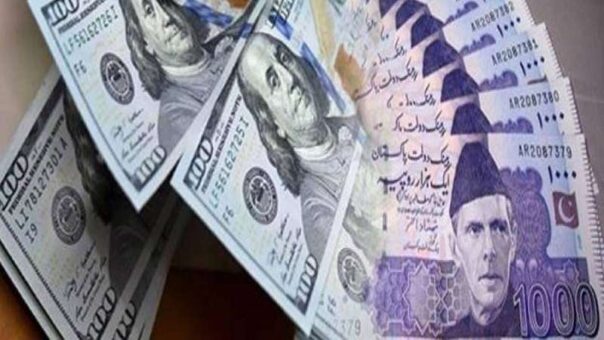Karachi, November 08, 2023 – The Pakistani Rupee (PKR) continued its losing streak, marking its 13th consecutive decline to end at PKR 286.90 against the US dollar on Wednesday.
Over the past twelve sessions, the rupee has experienced a significant drop of PKR 8.11, resulting in a substantial 2.91 percent decrease from its closing rate on October 20, 2023, which was PKR 278.79. This persistent decline in the rupee’s value has raised concerns among financial experts, with several contributing factors coming to light.
On a daily basis, the rupee decreased by PKR 0.51 compared to the previous day’s closing rate of PKR 286.39 in the interbank foreign exchange market.
One crucial factor driving this devaluation of the rupee is the diminishing foreign exchange reserves of Pakistan. According to a report from the State Bank of Pakistan (SBP), the country’s foreign exchange reserves fell by $78 million in just one week, ending at $12.577 billion by the week ending October 27, 2023, a significant decline from the previous week’s $12.655 billion ending on October 20, 2023. This starkly contrasts with the peak foreign exchange reserves observed in August 2021, which were a robust $27.2 billion.
Another significant contributor to the rupee’s depreciation is the surging demand for imports. The recent economic recovery and increased import activities have placed substantial pressure on the rupee. As businesses expand and the economy rebounds, the need for foreign currency to finance imports has surged, leading to a heightened demand for the US dollar.
The ongoing devaluation of the Pakistani Rupee against the US Dollar underscores the necessity for careful oversight and the development of strategies to stabilize the currency. A weaker currency can have widespread repercussions, affecting import costs, inflation rates, and the overall economic well-being of the nation. For businesses involved in international trade, fluctuations in exchange rates can significantly impact their profitability and global competitiveness.
A pressing concern that requires attention is Pakistan’s balance of payments. A persistent trade deficit could further strain foreign exchange reserves and the overall financial stability of Pakistan. To tackle these challenges, both the government and the central bank may need to consider implementing monetary and fiscal policies.
In conclusion, the continuous depreciation of the Pakistani Rupee against the US Dollar emphasizes the need to address the root causes of this decline, including foreign exchange reserves, trade balance, and increased demand for imports. To ensure economic stability, a coordinated effort is essential to implement effective policies and strategies that strengthen the currency and maintain Pakistan’s overall financial health.
